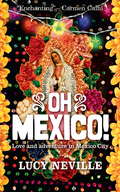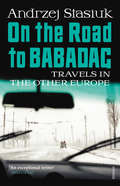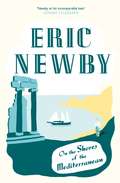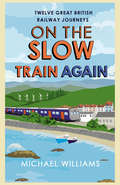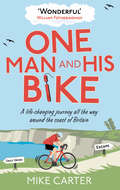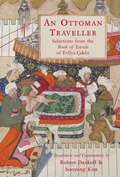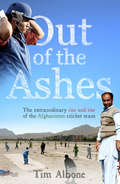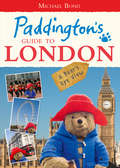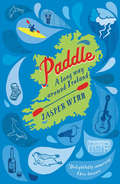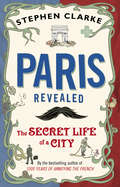- Table View
- List View
Oblivion
by Sergei LebedevOne of the first twenty-first century Russian novels to probe the legacy of the Soviet prison camp system by one of Russia's finest young writers. A young man travels to the vast wastelands of the Far North to uncover the truth about a shadowy neighbour who saved his life, and whom he knows only as Grandfather II. What he finds, among the forgotten mines and decrepit barracks of former gulags, is a world relegated to oblivion, where it is easier to ignore both the victims and the executioners than to come to terms with a terrible past.This disturbing tale evokes the great and ruined beauty of a land where man and machine worked in tandem with nature to destroy millions of lives during the Soviet century. Emerging from today's Russia, where the ills of the past are being forcefully erased from public memory, this masterful novel represents an epic literary attempt to rescue history from the brink of oblivion.
Ocean-going Liner (Queen Mary II), 2004 AD (large print)
by RnibThis image shows a very large, modern cruise liner. There is a locator dot shown, which will be at the top left of the page when the image is the right way up. Its long, deep hull fills the lower part of the page, with the stern at the left and bow at the right. Below the water level at the left of the ship is the rudder, and slightly to the right, the screw propeller which drives the ship through the water. Above the water level, and stretching almost the length of the ship, each deck is shown by a line of balconies or row of square windows. Between two of the lines of balconies, 12 lifeboats hang from the side of the ship. The large single funnel towers above all the decks in the top centre of the image. To the right of this is the radio mast on the top and front of the ship. The Captain's bridge, from where the ship is controlled, is down from this. There is a large protrusion, which stabilizes the ship, on the bow below the water level at the far right of the picture.
Ocean-going Liner (Queen Mary II), 2004 AD (UEB contracted)
by RnibThis image shows a very large, modern cruise liner. There is a locator dot shown, which will be at the top left of the page when the image is the right way up. Its long, deep hull fills the lower part of the page, with the stern at the left and bow at the right. Below the water level at the left of the ship is the rudder, and slightly to the right, the screw propeller which drives the ship through the water. Above the water level, and stretching almost the length of the ship, each deck is shown by a line of balconies or row of square windows. Between two of the lines of balconies, 12 lifeboats hang from the side of the ship. The large single funnel towers above all the decks in the top centre of the image. To the right of this is the radio mast on the top and front of the ship. The Captain's bridge, from where the ship is controlled, is down from this. There is a large protrusion, which stabilizes the ship, on the bow below the water level at the far right of the picture.
Ocean-going Liner (Queen Mary II), 2004 AD (UEB uncontracted)
by RnibThis image shows a very large, modern cruise liner. There is a locator dot shown, which will be at the top left of the page when the image is the right way up. Its long, deep hull fills the lower part of the page, with the stern at the left and bow at the right. Below the water level at the left of the ship is the rudder, and slightly to the right, the screw propeller which drives the ship through the water. Above the water level, and stretching almost the length of the ship, each deck is shown by a line of balconies or row of square windows. Between two of the lines of balconies, 12 lifeboats hang from the side of the ship. The large single funnel towers above all the decks in the top centre of the image. To the right of this is the radio mast on the top and front of the ship. The Captain's bridge, from where the ship is controlled, is down from this. There is a large protrusion, which stabilizes the ship, on the bow below the water level at the far right of the picture.
Oh Mexico!: Love and Adventure in Mexico City
by Lucy NevilleSet against the vibrant background of one of the world's most dangerous cities, Oh Mexico! is not only a classic travel memoir, but also contains great narrative and stuffed with amazing facts about this country's colourful history, lit up by warmth, wit, wisdom and pizzazz. With an eye for the bizarre and comic, Lucy's engaging account of surviving life and love in a vast, bustling Central American city is irresistible. After graduating from university with an Arts degree, she is faced with a dilemma: find a job or disappear to Latin America, the exotic land of her childhood dreams! Arriving in Mexico City with little money and only basic Spanish, Lucy's To-Do list is simple enough: Next morning I awoke and began writing a to do list. Not that I am an organised person, but I was feeling overwhelmed and I always find that a to do list gives me a sense that there is a potential to cope with the situation. 1. Find something to eat, 2. Wash undies, 3. Learn Spanish and 4. Get a job' Lucy promptly finds work as an English teacher and scores a room in a sunny apartment. Her new flatmate, the well-connected Octavio, is unnervingly attractive. So begins an adventure of comic challenges as Lucy negotiates Mexico City's stratified worlds, meeting everyone from street hawkers to crazy gringos, academics and socialites. Then, as the two men she accidentally falls in love with discover each other s existence, her extrovert family arrive for a visit! With a curious mind and a knowing eye, Lucy's account of life in this riotous third-world metropolis that is Mexico City is utterly irresistible.
Oil Tanker (tactile)
by Adrian FarnsworthThis page shows a simple side view of a very long oil tanker. The front of the ship is to the left and the stern and superstructure to the right.
On the Road to Babadag: Travels in the Other Europe
by Andrzej Stasiuk Michael KandelAndrzej Stasiuk is a restless and indefatigable traveller. His journeys - by car, train, bus, ferry - take him from his native Poland to small towns and villages with unfamiliar yet evocative names in Slovakia, Hungary, Romania, Slovenia, Albania, Moldova and Ukraine. Here is an unfamiliar Europe, grappling with the remnants of the Communist era and the arrival of capitalism and globalisation.'Where did Moldova end and Transylvania begin,' he wonders, as he is being driven at breakneck speed in a hundred-year-old Audi - loose wires hanging from the dashboard - by a driver in shorts and bare feet, a cross swinging on his chest. And so his journey continues all the way to Babadag, near the shore of the Black Sea, where he sees his first minaret.
On the Shores of the Mediterranean (Lonely Planet Journeys Ser.)
by Eric NewbyWith his trademark charm and sharp wit, Newby leaves no stone unturned in his quest for wonderfully detailed and quirky knowledge to share with his reader. Insightful, hilarious and sheer fun, this is an adventure not to be missed, by Britain's best-loved travel guide, and father of the genre.
On the Slow Train Again: Twelve Great British Railway Journeys
by Michael WilliamsMichael Williams has spent the past year travelling along the fascinating rail byways of Britain for this new collection of journeys. Here is the 'train to the end of the world' running for more than four splendid hours through lake, loch and moorland from Inverness to Wick, the most northerly town in Britain. He discovers a perfect country branch line in London's commuterland, and travels on one of the slowest services in the land along the shores of the lovely Dovey estuary to the far west of Wales. He takes the stopping train across the Pennines on a line with so few services that its glorious scenery is a secret known only to the regulars. Here, too, is the Bittern Line in Norfolk and the Tarka Line in North Devon as well as the little branch line to the fishing port of Looe in Cornwall, rescued from closure in the 1960s and now celebrating its 150th anniversary taking families on holiday to the seaside. From the most luxurious and historic - aboard the Orient Express - to the most futuristic - on the driverless trains of London's Docklands Light Railway - here is a unique travel companion celebrating the treasures of our railway heritage from one of Britain's most knowledgeable railway writers.
One Man and His Bike: A 5,000 Mile, Life-changing Journey Round The Coast Of Britain
by Mike CarterWhat would happen if you were cycling to the office and just kept on pedalling?Needing a change, Mike Carter did just that. Following the Thames to the sea he embarked on an epic 5,000 mile ride around the entire British coastline - the equivalent of London to Calcutta.He encountered drunken priests, drag queens and gnome sanctuaries. He met fellow travellers and people building for a different type of future. He also found a spirit of unbelievable kindness and generosity that convinced him that Britain is anything but broken. This is the inspiring and very funny tale of the five months Mike spent cycling the byways of the nation.
One Rough Man: A gripping military thriller from ex-Special Forces Commander Brad Taylor (Taskforce #1)
by Brad TaylorTheir existence is as essential as it is illegal. They call it the Taskforce. They operate outside of the law. Their organisation eradicates terrorists across the globe. But they've lost their best operator. Tragedy ruined Pike Logan. An attack is mere days away. Whether he's ready or not, the Taskforce are forced to put Logan back into action. But can a broken man still save the world? Perfect for fans of Lee Child, James Deegan and David Baldacci. Praise for Brad Taylor: 'It's an excellent read, and I greatly enjoyed it' Nelson DeMille. 'Pike ranks right up there with Jason Bourne, Jack Reacher and Jack Bauer' John Lescroart. 'Logan is a tough, appealing hero you're sure to root for' Joseph Finder. 'Fresh plot, great actions, and Taylor clearly knows what he is writing about' Vince Flynn.
An Ottoman Traveller: Selections from the Book of Travels by Evliya Çelebi
by Robert Dankoff Sooyong KimEvliya Çelebi is the greatest travel writer of the Ottoman Empire. Born in Istanbul in 1611, he started travelling in 1640 and continued for over forty years, stopping eventually in Cairo where he died in about 1685. He collected his lively and eclectic observations into a ten-volume manuscript the Seyahatname, or Book of Travels. For the first time in English, this selection gives a taste of the breadth of Evliya's interests: from architecture to natural history, through religion, politi, linguisti, music, science and the supernatural. While he made over a thousand complete recitations of the Koran in his lifetime, he also wrote with curiosity about Christianity, about his own impotence, about the anti at a world convention of trapeze artists and the feats of a Kurdish sorcerer who conjured a horse from a log pile.
Out of the Ashes: The Remarkable Rise and Rise of the Afghanistan cricket team
by Tim AlboneCool Runnings meets Joseph O'Neill's Netherland in an inspiring and feel-good story of bravery and sporting success from a country so widely known for war and extremism. This is the true story of the Afghanistan cricket team and their extraordinary attempt to join the world's elite cricketing nations. That this devastated nation should be able to field a cricket team at all, let alone one as successful as this, is an unbelievable achievement. Seven years ago, in a country which does not have a real cricket pitch even today, there was no national team. But a group of young Afghan men, exiled by war, learnt to play in the smashed concrete of refugee camps, and have risen from obscurity to the groomed grass pitches of international cricket.With unlimited access, Tim Albone travelled alongside the team for the two years, charting the players' progress from refugees in Pakistan to the brink of international sporting stardom. Far from being bogged down in cricket jargon, this tale of a gang of dedicated, charismatic, occasionally exasperating young men seeking triumph out of disaster is one that will move and inspire everyone.Foreword by Mike Atherton.
Outline map of South America (tactile)
by Sheffield Vi ServiceThis is an outline map of South America showing the border of Brazil.
Overview map of Europe 1 (large print)
by RnibThese pages show a map of Europe with an accompanying key. It is a multi-page image set on two pages. There is a locator dot shown on each page, which will be at the top left when the image is the right way up. The image is surrounded by an image border. Key to overview map of Europe This is a list of the abbreviations and colour used on the map. The abbreviations and colour are on the left and the country names and colour meaning to the right. Overview map of Europe Europe is in the centre and right of the page. Each country is labelled. There are parts of some countries shown which are not in Europe: a southern tip of Greenland in the top left corner and the northern part of some African countries in the bottom of the page. Some of the smaller countries are not labelled because of lack of space on this overview map. A more detailed map will label all countries.
Overview map of Europe 1 (tactile)
by RnibThese pages show a map of Europe with an accompanying key. It is a multi-page image set on two pages. There is a locator dot shown on each page, which will be at the top left when the image is the right way up. The image is surrounded by an image border. Key to overview map of Europe This is a list of the abbreviations and colour used on the map. The abbreviations and colour are on the left and the country names and colour meaning to the right. Overview map of Europe Europe is in the centre and right of the page. Each country is labelled. There are parts of some countries shown which are not in Europe: a southern tip of Greenland in the top left corner and the northern part of some African countries in the bottom of the page. Some of the smaller countries are not labelled because of lack of space on this overview map. A more detailed map will label all countries.
Paddington at the Tower
by Michael BondThe irresistible, classic bear from Darkest Peru, who was found on Paddington station, causes havoc while out sight-seeing!
Paddington’s Guide to London
by Michael BondA bear’s eye view of London as told by the classic, best-loved character from Darkest Peru.
Paddle: A long way around Ireland
by Jasper WinnOne summer, writer and musician, Jasper Winn set himself an extraordinary task. He would kayak the whole way round Ireland -- a thousand miles -- camping on remote headlands and islands, carousing in bars and paddling clockwise until he got back where he started. But in the worst Irish summer in living memory the pleasures of idling among seals, fulmars and fishing boats soon gave way to heroic struggles through storm-tossed seas ... and lock-ins playing music in coastal pubs. Circling the country where he grew up, Jasper reflects on life at the very fringes of Ireland, the nature and lore of its seas, and his own eccentric upbringing -- sprung from school at age ten and left free to explore the countryside and its traditional life.Charming, quietly epic, and with an irresistible undertow of wit, Paddle is a low-tech adventure that captures the sheer joy of a misty morning on Ireland's coast. As the sun breaks through, you'll be longing to set off in his wake. Jasper Winn grew up in West Cork, where he left school at age ten and educated himself by reading, riding horses, learning rural skills and playing music. It was an upbringing that has shaped a lifetime of travel and writing.He has journeyed across the Atlas with nomadic Berbers, canoed along the Danube, and often crosses countries on horseback. He was story consultant on the IMAX film, Ride Around the World, about the world's horse cultures. Paddle is his first book.
Paddle Steamer, 1822 AD (large print)
by RnibIn this image of a paddle steamer the stern is in the bottom left corner of the page and the bow to the right of the page. There is a locator dot shown, which will be at the top left of the page when the image is the right way up. Just up from the stern there is a flag flying which is stretched out straight to the left. To the right of this is a cabin with two portholes. Down from the cabin is the hull which is long and low and goes right across the page. It has five portholes on the stern half just above the waterline. The paddle wheel with its curved cover is in the middle and two more portholes at the bow end to the right. Up and to the right from here is the bowsprit which sticks out almost horizontally. Ropes lead from the bowsprit up and left to the main mast. This carries a furled mainsail. Left of this is a tall funnel and left again is the mizzen mast with a small furled mizzen sail. There is no rudder as the large paddle wheels could rotate in either direction and at different speeds, allowing the steamer to go forwards, backwards and to turn.
Paddle Steamer, 1822 AD (UEB contracted)
by RnibIn this image of a paddle steamer the stern is in the bottom left corner of the page and the bow to the right of the page. There is a locator dot shown, which will be at the top left of the page when the image is the right way up. Just up from the stern there is a flag flying which is stretched out straight to the left. To the right of this is a cabin with two portholes. Down from the cabin is the hull which is long and low and goes right across the page. It has five portholes on the stern half just above the waterline. The paddle wheel with its curved cover is in the middle and two more portholes at the bow end to the right. Up and to the right from here is the bowsprit which sticks out almost horizontally. Ropes lead from the bowsprit up and left to the main mast. This carries a furled mainsail. Left of this is a tall funnel and left again is the mizzen mast with a small furled mizzen sail. There is no rudder as the large paddle wheels could rotate in either direction and at different speeds, allowing the steamer to go forwards, backwards and to turn.
Paddle Steamer, 1822 AD (UEB uncontracted)
by RnibIn this image of a paddle steamer the stern is in the bottom left corner of the page and the bow to the right of the page. There is a locator dot shown, which will be at the top left of the page when the image is the right way up. Just up from the stern there is a flag flying which is stretched out straight to the left. To the right of this is a cabin with two portholes. Down from the cabin is the hull which is long and low and goes right across the page. It has five portholes on the stern half just above the waterline. The paddle wheel with its curved cover is in the middle and two more portholes at the bow end to the right. Up and to the right from here is the bowsprit which sticks out almost horizontally. Ropes lead from the bowsprit up and left to the main mast. This carries a furled mainsail. Left of this is a tall funnel and left again is the mizzen mast with a small furled mizzen sail. There is no rudder as the large paddle wheels could rotate in either direction and at different speeds, allowing the steamer to go forwards, backwards and to turn.
Painting of Cutty Sark by Frederick Tudgay, 1872 (tactile)
by RnibThe ship's portrait was painted for Cutty Sark's owner John Willis and shows a side view of Cutty Sark in full sail with her bow on the right and stern on the left. Cutty Sark is painted against a grey and white cloudy sky sailing across a deep sea-green sea with white waves breaking along the ship's hull and over the sea's surface. Just in front of her but far away in the distance is the rather ghostly grey shape of another sailing ship in full sail but going in the opposite direction to Cutty Sark. The black hull of the ship is a stark contrast to the creamy white of the sails, the three white masts and the white figurehead at the bow. At the top of the main mast is the Willis house flag - a blue flag with a red cross on a white square background set diagonally on the blue. At the stern, above the spanker sail (the last sail) is the red ensign, a large red flag with the union jack in the top right corner. All the rigging is carefully painted along with the main deck structures including the ship's steering wheel. The scene is completed by small figures of people standing on the main deck.
Paris: Everything You Ever Wanted To Know
by Klay LamprellLonely Planet: The world's leading travel guide publisher* This is not a guidebook. And it is definitely 'not-for-parents'. It is the real, inside story about one of the world's most famous cities - Paris. In this book you'll hear fascinating tales about creepy stone gargoyles, ghostly railway stations, huge castles and amazingly pampered pets. Check out cool stories about stuffed animals, caves filled with bones and the deadly guillotine. You'll find cyclists, junk collectors and musicians, and snails on the menu for dinner. Where can you pretend you're at the beach in the middle of the city? Who smiles at 6 million people a year? Who had her own life-size village built just to play in? Which famous building was built inside out? This book shows you a Paris your parents probably don't even know about. Authors: Written and researched by Lonely Planet, Klay Lamprell About Lonely Planet: Started in 1973, Lonely Planet has become the world's leading travel guide publisher with guidebooks to every destination on the planet, as well as an award-winning website, a suite of mobile and digital travel products, children's books, and a dedicated traveller community. Lonely Planet's mission is to enable curious travellers to experience the world and to truly get to the heart of the places where they travel. TripAdvisor Travellers' Choice Awards 2012 and 2013 winner in Favorite Travel Guide category 'Lonely Planet guides are, quite simply, like no other. ' - New York Times 'Lonely Planet. It's on everyone's bookshelves; it's in every traveller's hands. It's on mobile phones. It's on the Internet. It's everywhere, and it's telling entire generations of people how to travel the world. ' - Fairfax Media (Australia) *#1 in the world market share - source: Nielsen Bookscan. Australia, UK and USA. March 2012-January 2013
Paris Revealed: The Secret Life of a City
by Stephen ClarkePARIS - one of the most visited cities in the world.BUT do you know ... Which is the most romantic spot to say 'je't'aime'? And the sexiest?Where to see fantastic art, away from all the crowds?Why Parisian men feel compelled to pee in the street?How to choose a hotel room where you might actually get a good night's sleep?Stephen Clarke goes behind the scenes to reveal everything Parisians know about their city - but don't want to tell you.


